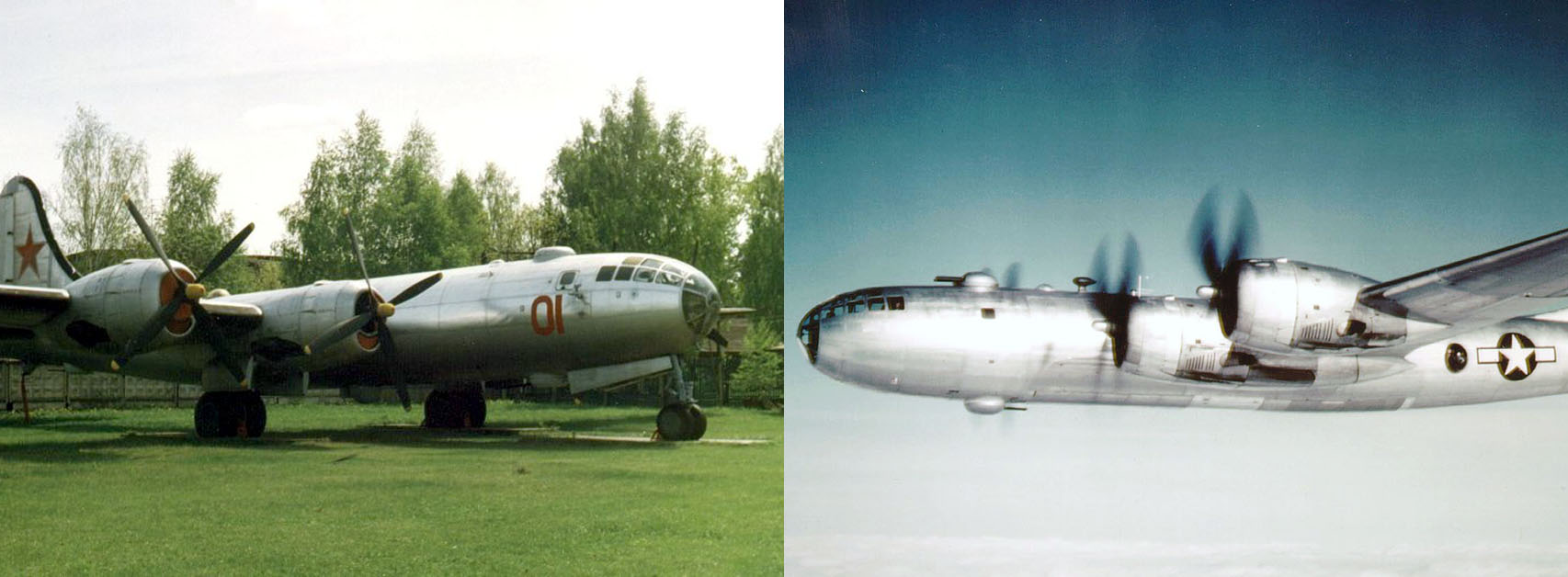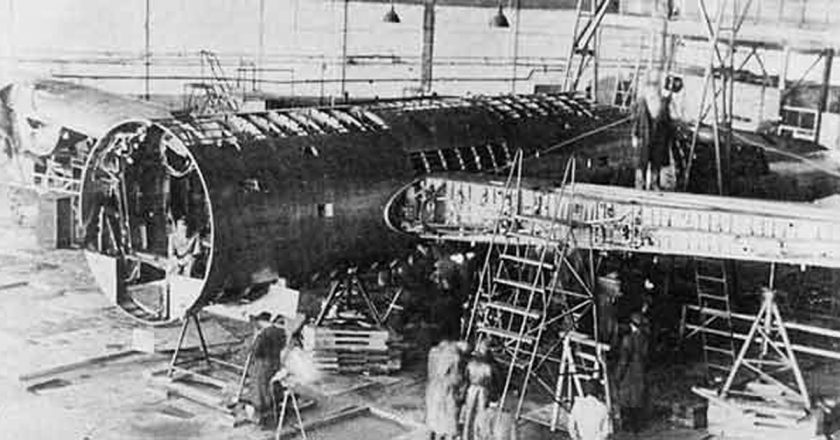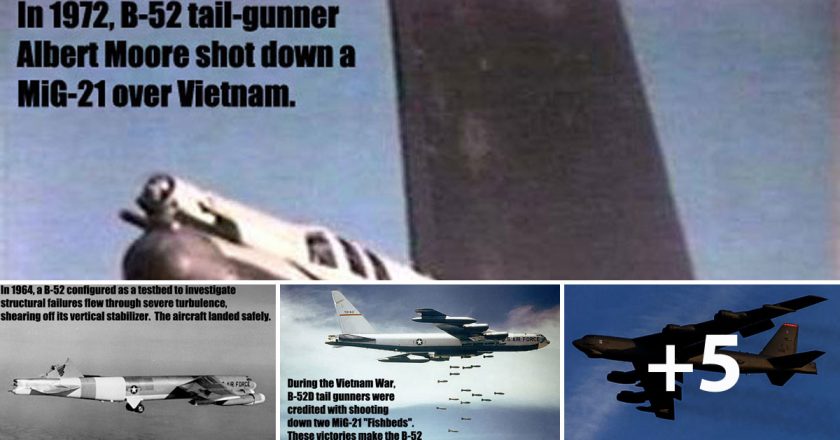Despite being on opposing sides, 4,500 km and 6 years apart basically the same planes were used for the same milestone. The Tupolev Tu-4 and Boeing B-29.

A specially modified Tupolev Tu-4A piston-engined strategic bomber was the first Soviet aircraft to drop an atomic bomb – the 41.2-kiloton RDS-3. The standard Tu-4 (reverse-engineered from the American Boeing B-29) was not capable of carrying nuclear weapons.
Ten of the Tu-4s were converted for use as atomic bombers and designated as the Tu-4A ( the A was for Atomiy, “Atomic” in Russian). The bomb bays were specially modified for the atomic bombs, being climate-controlled to protect the rather delicate early atomic bombs.
These were the Soviet Union’s first nuclear bombers, and were used to drop nuclear devices over test grounds at Semipalatinsk in Kazakhstan and the Novaya Zemlya archipelago in the Soviet Arctic.
On October 18, 1951, at the Semipalatinsk test site, a probable discharge of an atomic bomb RDS-3 with a capacity of 41.2 kilotons was carried out for a conventional purpose. This was the first real dropping of an atomic bomb from the bomber in the USSR. Tests showed that when an aerial explosion at an altitude of several hundred meters, the level of radioactive contamination of the terrain is more than 100 times less than when ground-based. RDS-3 was the third atomic bomb developed by the Soviet Union, after the famous RDS-1 and RDS-2.
One of the fundamental questions that have arisen before the tests was the question of how to test: on a tower like RDS-1 , or by dropping a bomb from an airplane? At the meeting of the scientific and technical council, where the issue of testing at the Semipalatinsk test site was discussed, opinions were divided. The developers of charges led by Yu.B. Khariton believed that the tests should be carried out on the tower (similar to RDS-1) , in order to more accurately determine the power and obtain more reliable information on the development of the chain reaction. The leaders of the atomic project, headed by I.V. Kurchatov voted for conducting flight tests of the atomic bomb with bombing it from the aircraft for the purpose. In this case, in addition to determining the effectiveness of the explosion, the first time in the USSR would be a test of a combat atomic bomb. The final decision was transferred to the First Main Directorate. At this level, they decided to conduct a combat test with the bombing of a TU-4 aircraft. Thus, on October 18, 1951, an atomic bomb was first tested in the USSR by bombing against a target.
Perhaps the most famous B-29s were the sixty-five examples of the Silverplate series, which were modified to drop atomic bombs. They were also stripped of all guns, except the tail ones, in order to have a lighter plane. The Silverplate bombers differed from other B-29s then in service by having fuel injection and reversible props. All were handpicked by Lieutenant Colonel Paul W. Tibbets for the mission, straight off the assembly line at the Omaha plant.
On 5 August 1945, during preparation for the first atomic mission, Colonel Paul Tibbets assumed command of the aircraft and named it after his mother, Enola Gay Tibbets, who, in turn, had been named for the heroine of a novel. When it came to selecting a name for the plane, Tibbets later recalled that:
… my thoughts turned at this point to my courageous red-haired mother, whose quiet confidence had been a source of strength to me since boyhood, and particularly during the soul-searching period when I decided to give up a medical career to become a military pilot. At a time when Dad had thought I had lost my marbles, she had taken my side and said, “I know you will be all right, son.
Hiroshima was the primary target of the first nuclear bombing mission on 6 August, with Kokura and Nagasaki as alternative targets. Enola Gay, took off from North Field, in the Northern Mariana Islands, about six hours’ flight time from Japan, accompanied by two other B-29s, The Great Artiste, carrying instrumentation, and a then-nameless aircraft later called Necessary Evil, commanded by Captain George Marquardt, to take photographs. The aircraft made their way separately to Iwo Jima, where they rendezvoused at 2,440 meters (8,010 ft) and set course for Japan. The release at 08:15 (Hiroshima time) went as planned, and the Little Boy took 43 seconds to fall from the aircraft flying at 9,470 m to the predetermined detonation height about 600 m above the city. The detonation created a blast equivalent to 16 kilotons of TNT (67 TJ).
References:
https://en.wikipedia.org/wiki/Boeing_B-29_Superfortress
https://en.wikipedia.org/wiki/Tupolev_Tu-4

